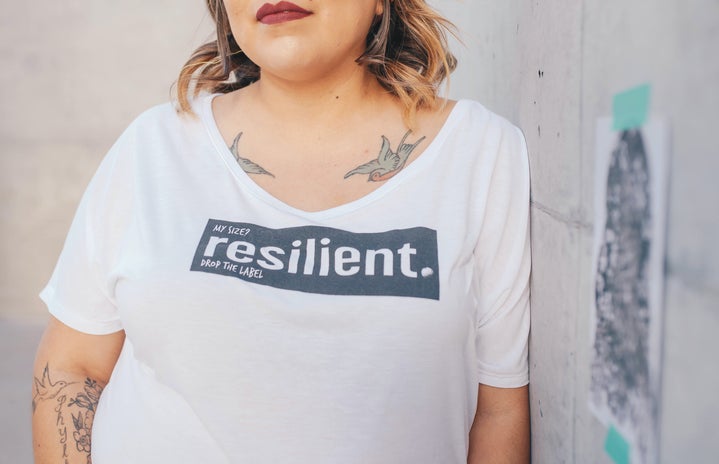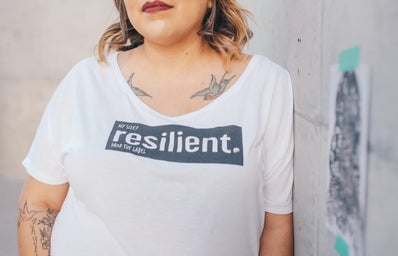Trigger Warning: discussion of abortion and sexual violence.
If you are looking for resources about abortion or general sexual health resources check out Planned Parenthood or call the All-Options Hotline at 1-888-493-0092.
Most women have probably heard the horror stories of what it was like before abortion was legalized. Pregnant people often turned to non-medical doctors for abortion procedures or women would attempt their own procedures using clothes hangers or possibly just hitting themselves in the stomach. Illegal abortions weren’t always officially recorded, but from the information that was recorded, it is understood that one in six of all pregnancy-related deaths, in 1965, occurred from illegal abortions. Everything seemingly changed in 1973 when the United States Supreme Court ruled that abortion is a legal right in the landmark case, Roe v. Wade. Reports have shown that after Roe v. Wade, abortion safety was increased and now has a safety rate of 99%.
Twenty-five percent of women will have an abortion by the age of 45 in the United States. There are many reasons people may seek an abortion, all of which are valid. Some reasons may be based on concerns of finances, the health of parent or baby, preparedness, timing and relationship struggles. People may consider abortion if they are survivors of domestic violence, sexual violence or incest. Another reason people may seek an abortion is simply that they don’t want a baby. These reasons are diverse and vary from person to person, but all reasons are equally valid.
Before I continue it is important to note that abortion laws, rights, and accessibility do not solely affect cisgender women. Abortion also affects anyone with the capacity to be pregnant which may include but is not limited to, trans men and gender non-conforming folks. Scholarly literature and news stories about abortion use very gendered language, primarily focusing on cisgender women, I am working to challenge that logic by using mostly gender-neutral language in discussing this topic. For example, I may use phrases such as pregnant people, pregnant folks, and people with the capacity to become pregnant, instead of language centered around cis-women and vaginas. I am not perfect and my sources are not perfect, so to maintain the intended meaning of some of my sources, I may need to use gendered language occasionally.
Legality Versus Accessibility
After the United States gained independence from England, most states’ had a ban on abortion after the start of fetal movements (15-20 weeks), which was the English common law for abortion that American states upheld. Anti-abortion laws began to become more prominent in the 1820s. By 1900, abortion became a felony federally in the United States. There were some exceptions depending on the state for medical necessities.
Seventy-three years later, Roe V. Wade ruled that abortion was a constitutional right. The Court has also placed standards on restrictive abortion laws in further cases, the main standard is that a state cannot ban abortion before viability, which is the point at which the fetus can survive outside of the uterus. If a state does enforce such a ban, they must include exceptions for medically necessary cases.
Probably the most important standard the court has placed on abortion laws was the “undue burden” standard established in the 1992 case Planned Parenthood V. Casey and clarified in the 2016 case Whole Woman’s Health V. Hellerstedt. The “undue burden” standard ensures that there cannot be a substantial obstacle in the way of seeking an abortion. The “undue burden” standard is meant to ensure that abortion is not only legal but also accessible, unfortunately, it seems that is not the case in the United States and many activists in the United States are worried about the future for legal precedent on abortion.
Legal Restrictions
Since Trump was elected in 2016, there has been a lot of worry about the fate of Roe v. Wade and the legal status of abortion. That worry only increased as he gained office and appointed Brett Kavanaugh to the Supreme Court. In 2003, a federal law was passed, which was coined as the Federal Abortion Ban, that criminalizes abortion in the second trimester of pregnancy. The Federal Abortion Ban was upheld by the Supreme Court in 2007.
Recently, the most outrage has been due to individual state’s curtailing of access to abortion. In 2019, three states, Ohio, Kentucky, and Mississippi have passed fetal heartbeat bills, which bans abortion after the heartbeat is detectable which usually occurs at around six weeks of pregnancy. Georgia is also expected to pass a fetal heartbeat bill in May. Many people have come out against the bill by telling their personal narratives of their pregnancies and abortions, and overwhelmingly it can be seen that people usually don’t know they are pregnant until after six weeks.
The curtailing of access to abortion is not a new phenomenon. Since 1973 there have been over 1,000 state laws restricting abortion access. Six states are considered hostile in terms of abortion accessibility and 23 states are considered extremely hostile. In 2017, it was found that 58 percent of women live in one of these 29 states deemed hostile or extremely hostile. There are countless types of abortion restrictions and some laws that make the experience of receiving an abortion traumatic such as counseling and waiting periods, mandatory ultrasounds, targeted regulation of abortion providers, parental involvement in minors’ abortions, banning of abortion medications, granting personhood to a fetus at conception and withholding information about pregnancy and abortion options.
Attempted Restrictions
There have been efforts to pass a variety of anti-abortion bills on a state and federal level. Some efforts have been made to ban abortion nationwide and others to ban abortion at 20 weeks of pregnancy. One of the most recent attempts was in Texas, where the death penalty is used to punish someone convicted of killing a child under the age of 10. Recently, a state legislator in Texas wrote a bill to grant citizenship to a fetus at the moment of conception, thus with the current death penalty in place, a pregnant person who had an abortion would, under the law, be convicted of killing a child under the age of 10 and be subject to the death penalty. The bill was not passed but had massive support from conservatives nationwide.
Economic Restrictions
Access to abortion is also economically limited. Twenty-six states have laws that make it illegal for plans that include abortion coverage as part of comprehensive health care to be sold in the Affordable Care Act Marketplaces and 11 of those states have laws that make it illegal for all private insurance companies to offer abortion coverage in a comprehensive health care plan. Some states have exceptions when a woman is a survivor of rape or incest, but nine states still uphold these laws in those scenarios.
Additionally, the Hyde Amendment prohibits abortion coverage for people enrolled in Medicaid except in medically necessary situations. However, 33 states still prohibit abortion coverage under Medicaid in medically necessary situations. The point of the Hyde Amendment is to ban federal funding to be used to pay for abortions. Marginalized groups of people who rely on federal programs for healthcare such as people with disabilities, Native Americans, prison inmates, poor people in Washington DC, military personnel and federal employees.
Often times people may not be able to obtain an abortion procedure unless they can pay for it out of pocket. In 2014, the average amount of people that paid for an abortion paid $508 and around 53% of people paid for their abortion out of pocket.
Self-Induced Abortions
While it may seem that at-home-abortions are a thing of the past, pregnant folks are still pushed to dangerous methods of self-induced abortions in the 21st century. Although abortion may be federally legal, the accessibility of abortion is lacking in most states. Legal, economic, and social barriers, along with trauma, can lead pregnant folks to self-induce abortions themselves. In one month in 2017, 200,000 people searched self-abortions on Google. A study conducted by the Guttmacher Institute showed that 11 percent of respondents had an abortion done by a health care professional and 11 percent of respondents attempted self-abortion.
There is no official data on how many women attempt self-abortion and one reason may be the criminalization of self-induced abortion. Self-induced abortion is illegal in 7 states, Arizona, Delaware, Idaho, Nevada, New York, Oklahoma and South Carolina. Fourty different types of legislation have been identified that could be used to prosecute people who have a self-induced abortion or people who help induce at-home abortions. Unfortunately, the criminalization of self-induced abortion makes such practices more dangerous because they are less likely to seek medical care afterward for fear of prosecution.
While upholding the legal precedent which protects abortion as a right is incredibly important, activists should not disregard how crucial the fight for accessible abortions is. If abortions aren’t accessible to the most marginalized people in society, then it is questionable whether abortion legalization is fulfilling its purpose. Abortion is a constitutional right, yet people with the capacity to become pregnant are forced to turn to illegal methods of abortion to access their constitutional right. The fight for legal abortions is not over until all members of society have access to safe, timely, and non-judgmental resources for abortion.
Reproductive justice is “a framework that centers the human right to have children, not have children, and parent the children we have in safe and healthy environments,” which differs from reproductive rights frameworks because not only does it fight for legal rights, but the reproductive justice framework also fights for accessibility to adequate care, comprehensive LGBTQ+ inclusive sex-education, a living wage, freedom from violence and discrimination. If you are interested in learning more or getting involved in Reproductive Justice activism check out the DC organization URGE, Unite for Reproductive and Gender Equity.



